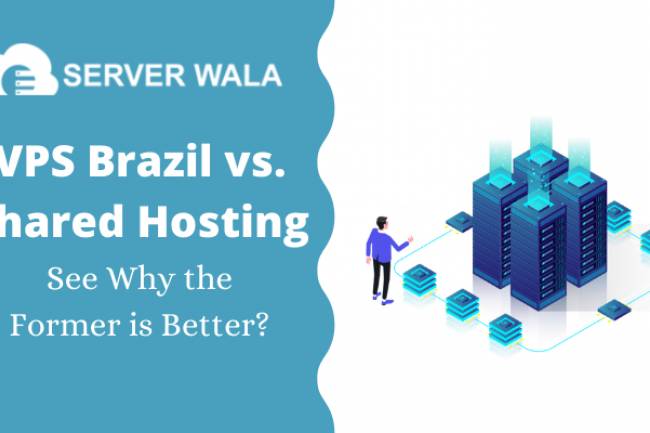
How to Enhance Network Security With the Latest IT Networking Solutions
Network security starts with managing physical access to networking hardware. A misplaced laptop, an unsecured USB connection, and even simple human error can lead to rapid data loss that no firewall will protect.
Software-defined networking delivers a closed-loop intent-based model with analytics, learning, and automation for continuous policy alignment to business needs. It improves user experiences, delivers application performance assurance, and provides valuable telemetry for streamlined IT operations.
VLAN
A VLAN is a virtual network that divides networks into logical groups based on their function or purpose. It provides a way to increase security by limiting access to sensitive data and improves performance by reducing network latency. It also simplifies device management by grouping workstations or laptops based on their functional needs instead of their physical location.
Without a VLAN, broadcast messages shared by a host can easily reach all devices in the network, which increases CPU overhead and reduces overall network security. With a properly configured VLAN, only the devices belonging to the same logical network can receive the broadcast, significantly increasing security and efficiency.
It is also important to note that a packet injected into one VLAN can leak into other VLANs, which could be better regarding network security. It is a good idea to use an ACL to filter the traffic entering and leaving your network and limit access to specific files or folders within the network. It is a great way to prevent malware from spreading across the entire network.
Firewall
A firewall is an essential network security tool that observes and filters incoming and outgoing network traffic, adhering to the security policies set by the organization. It acts as a protective wall between the private internal network and the internet, ensuring that only authorized users can connect to the system.
In a world where cyber attacks are getting more sophisticated, the best way to protect your business is with IT networking solutions that include a Firewall. A firewall monitors the activity on your computer network to detect malicious activities such as malware, ransomware, and phishing. Once it detects these activities, the firewall will notify you and take action to block them.
It can also block risky web applications by establishing policies that allow, deny, or restrict their access to network resources. Unauthorized software or web apps on employee devices increase the risk of cyber attacks. It will also prevent data breaches from insiders and external hackers. The firewall can also help businesses with their application security by allowing IT teams to define rules that allow, deny, or restrict access to specific apps and services.
IPS
An intrusion prevention system (IPS) analyzes network traffic in real-time to detect and block potential threats. The system typically sits in-line, between the source and destination of network traffic and behind a firewall, to scan and thoroughly inspect incoming data.
An IPS tool can use several detection techniques to detect security breaches. Signature-based detection looks for recognizable codes and patterns in known threats, like brute force attacks, distributed denial of service (DDoS) attacks, and specific malware. It can also identify activity that violates enterprise security policies, which administrators set in advance.
Anomaly-based detection randomly samples traffic and compares it to a performance level baseline. It is more effective at detecting unknown threats but can produce false positives. Cutting-edge IPS solutions can be infused with artificial intelligence (AI) and machine learning to reduce these false alerts. An IPS can also detect and respond to attacks, closing loopholes in the network, shutting access points, and reconfiguring firewalls. It can also automatically send events to system administrators for review. This way, the IPS can prevent a breach from taking hold and escalating into a full-fledged attack.
Antivirus
In addition to deploying security patches on network operating systems and servers, you should also deploy antivirus software for each client system on the network. You may also use centralized endpoint protection systems that automatically update signatures across the entire network.
Encrypting data is another critical step towards improving network security. It converts data into a code that authorized individuals can only decrypt. Educating users on creating strong passwords and changing them regularly will enhance security.
Viruses, trojans, and worms can cause severe damage to computer systems. They can steal sensitive information, slow down computers, and corrupt files. You can prevent these threats from entering your network by installing antivirus software, blocking access to untrustworthy websites, and educating users on spot phishing emails.
Allowing unfiltered peer-to-peer communications between workstations creates significant vulnerabilities that a network intruder can exploit. Once an intruder gains a foothold on one system, they can spread malware to others throughout the network. You can prevent lateral movement of intruders by implementing MAC address filtering on routers and blocking traffic from unapproved devices.
Web Filtering
The internet provides businesses of all sizes with incredible resources but can also be the source of various undesirable consequences, including malware-infected websites, employees accessing age-inappropriate content, and decreased productivity from time spent on distracting sites. To prevent these issues, a web filtering solution is vital.
Web filters work by setting up lists of allowed and blocked sites or URLs. The website is restricted when a user tries to access a website not included on the approved list. When a site is on the list, it is allowed. Allows administrators to create custom lists that cater to their organization’s needs.
Many threats use the internet to target government employees through social media, chat groups, and inappropriate message boards. It can cause a loss of productivity or even expose sensitive data.












